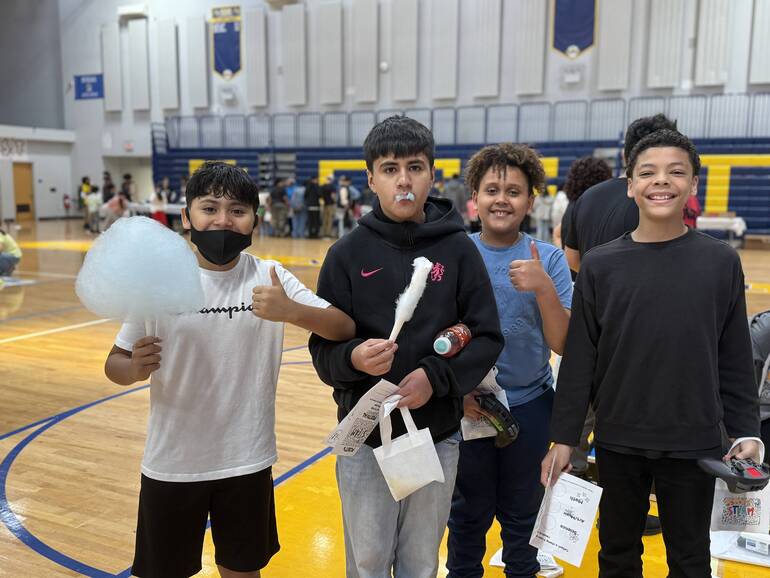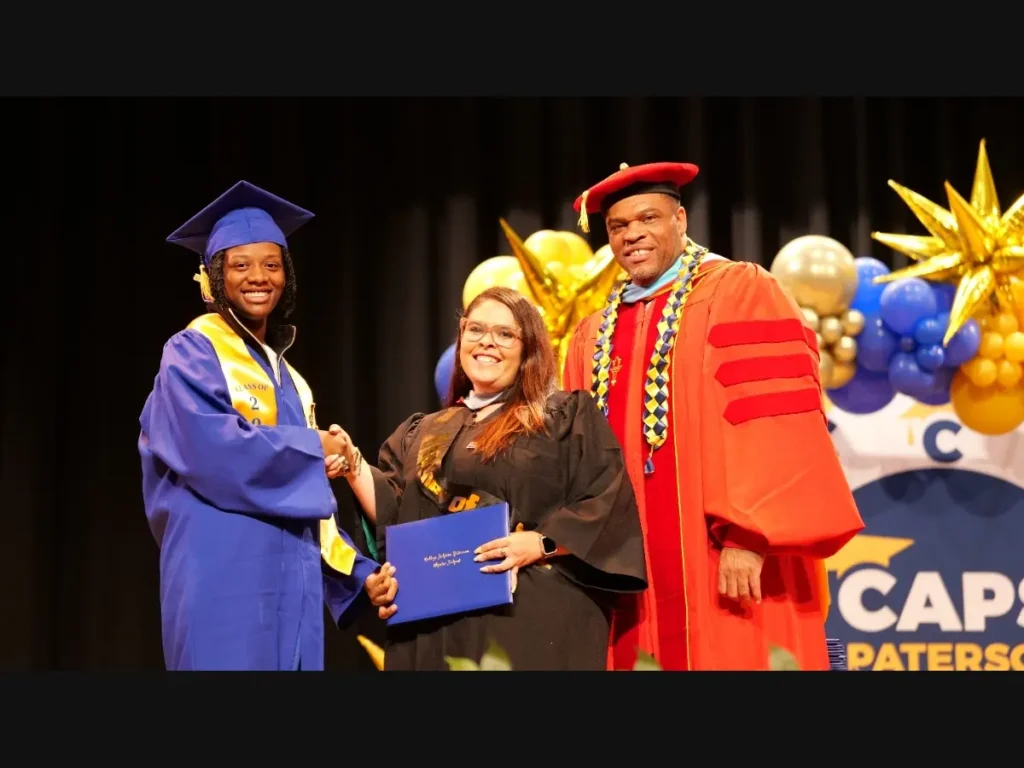PATERSON, NJ – Paterson Charter School for Science and Technology (PCSST) welcomed dozens of students, families, and volunteers to its annual STEAM Fair on Saturday, giving the community a full day of hands-on science, technology, engineering, arts, and math experiences.
The fair featured dozens of interactive stations—from liquid nitrogen ice cream to Lego robots and JENGA—all designed to spark curiosity and make STEM accessible and fun for kids, particularly those in kindergarten through eighth grade.
“This is about exposing younger minds to STEM education,” David Aytas, Director of STEM Instruction at PCSST. “They can get interested, parents can get involved, and everybody walks away seeing what’s possible—what their kids can learn and do.”
Aytas said the school has been hosting the fair for more than seven years. Students from the school’s high school grades volunteer to supervise booths, guide younger children through experiments, and help with event logistics. This year, over 60 student volunteers and 40 teachers participated.
The school’s approach is collaborative, with teachers across departments working together to design fun, hands-on learning stations. “We meet with math, science, art, and tech teachers and brainstorm what kids can do—not just what we can show them,” Aytas said. “It’s hands-on learning that supports our mission and becomes a culminating event that showcases what our students can do.”
This year’s event included new additions like pinwheel crafting and giveaways such as cotton candy and popcorn. Robotics teams from PCSST and a guest team offered demonstrations using pushbots and games like ring toss and ring bowling.
For students like Isaac Te-Cios, a junior who led robotics and drone demonstrations, the fair is about inspiring younger students. “They see the tech, they see the robotics, they see the math, art—all that stuff. They get to have more of a creative mindset than they already do,” he said.
Te-Cios helped design robot games for younger kids to play and said the goal is to let children “leave here with more of a sense of creativity than they came with.”
Sixth grader Kenan Alomari also volunteered at a sustainability booth, teaching visitors how to fold biodegradable plant pots from newspaper. “It’s not just a science fair,” he said. “You learn that science, art, and math aren’t just regular subjects. They can be all types of stuff. The main thing is: learn what you can because the world is a very broad place.”
The science stations offered demonstrations with real-world applications and wow-factor experiments. A Van de Graaff generator zapped students’ hair into the air, while the classic “elephant toothpaste” reaction filled containers with foamy eruptions. Guests made their own slime, grew homemade crystals, and adorn themselves with intricate henna designs.
Each attendee received a STEAM Fair passport, collecting stamps at activity stations throughout the day; once filled, the passport could be redeemed for free popcorn, ice cream, or cotton candy. Students in grades K–7 who presented their stamped passports at school would also earn a free Tag Day on June 2. Attendees also went home with a little bag that had a 3D printed keychain inside.
At the liquid nitrogen booth, science became dessert. Flash-freezing ice cream with nitrogen vapor showed the process of rapid cooling, a fun application of gas laws and phase changes in chemistry.
In another demo, a reduced-pressure boiling experiment allowed water to boil in a sealed container after ice water was poured over it—visually explaining how pressure affects boiling points. “It’s interesting because it’s like doing the opposite of what you’d expect,” said Erika Portalatin, a parent attending the fair for the first time with her daughter, Elena, a kindergartener.
Portalatin appreciated the hands-on approach. “Demonstrating catches students’ attention more than just hearing about it. When you’re hands-on, it’s more interesting—and you actually understand it,” she said.
Art and music stations provided creative outlets as well. Children painted watercolor scenes and contributed to a giant collaborative coloring poster.
Even math got a fun makeover, with kids solving puzzles like the Towers of Hanoi, competing in the 24 Game, and playing math-themed Twister.
According to Aytas, one of the biggest challenges in organizing the fair is balancing it with teachers’ everyday workload. “Nobody gets paid extra to be here on a Saturday, but it’s worth it. They’re giving to our community,” he said. “Once the event is over, we feel relaxed because we know we ended the school year with something meaningful.”
PCSST’s STEAM Fair continues to grow each year, with new exhibits and greater community involvement. “Every year we ask teachers to bring new ideas,” Aytas said. “We’re always looking to keep it fresh—and keep kids excited about learning.”



